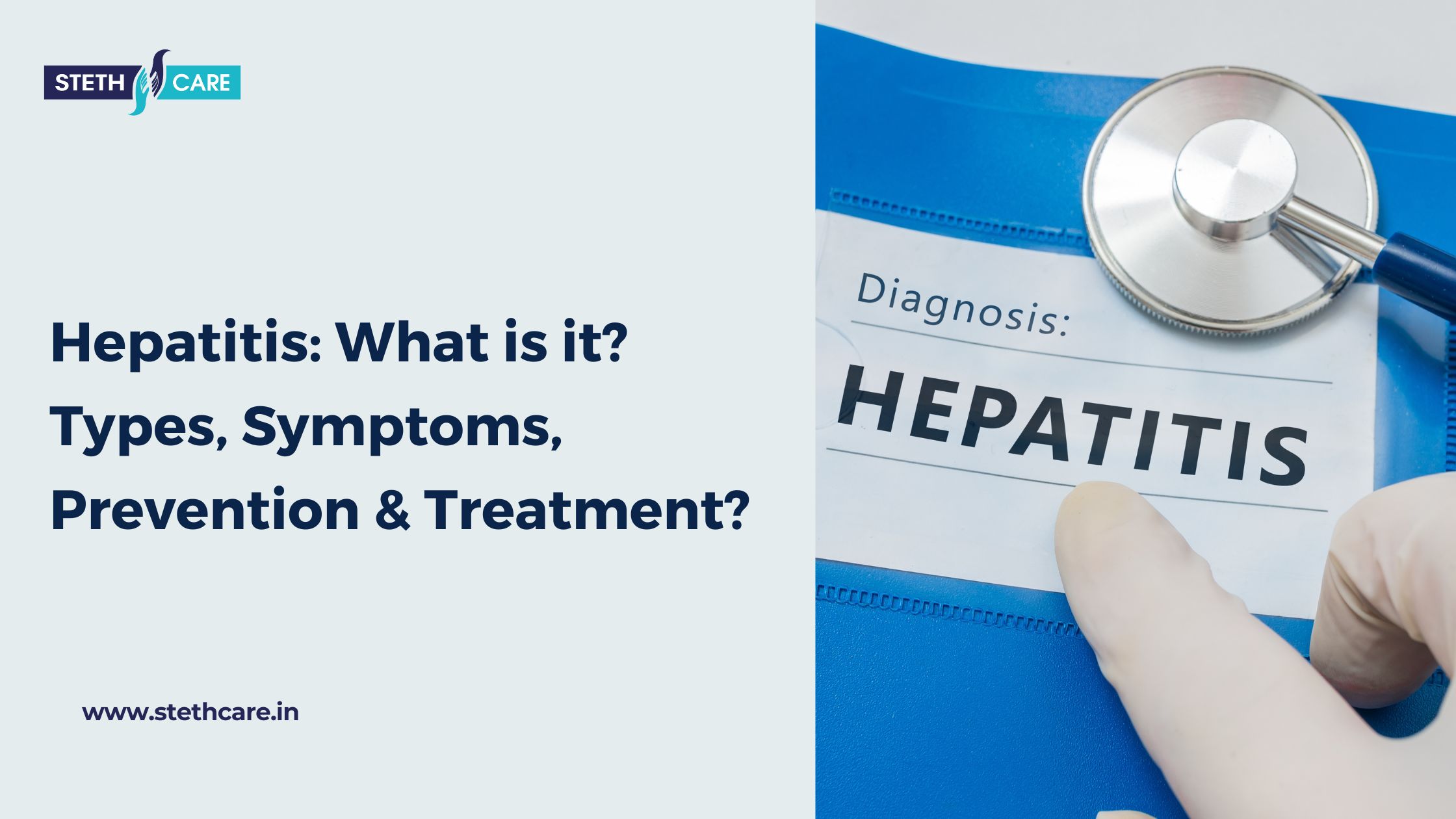
Hepatitis is a viral infection that affects millions of people worldwide. It is a disease that attacks the liver and can lead to serious health complications. The good news is that this disease is preventable, and there are steps you can take to protect yourself and your loved ones from contracting the disease. In this article, we will explore the different types of hepatitis, how it is transmitted and provide you with practical tips on how to prevent the spread of the virus.
Whether you have already been diagnosed with this disease or are simply concerned about your risk of contracting the disease, this guide will arm you with the knowledge you need to stay healthy and protected. So, let’s get started and learn how to keep ourselves and our loved ones safe from this dangerous virus.
Types and Symptoms:
Hepatitis is a viral infection that affects the liver. There are several types in this disease, including hepatitis A, B, C, D, and E. Each type of this disease has different symptoms, modes of transmission, and treatment options.
Hepatitis Type A: It is usually spread through contaminated food and water or by close contact with an infected person. Symptoms of hepatitis A include fatigue, nausea, vomiting, abdominal pain, and jaundice.
Type B: It is spread through contact with the blood, semen, or other body fluids of an infected person. It can also be spread from mother to baby during childbirth. Symptoms of hepatitis B include fever, fatigue, loss of appetite, nausea, vomiting, abdominal pain, dark urine, and jaundice.
Type C: It is spread through contact with the blood of an infected person. It is often asymptomatic or can cause mild symptoms such as fatigue and abdominal pain. However, if left untreated, hepatitis C can lead to liver damage and liver cancer.
Type D: It is a rare form of hepatitis that only affects people who are already infected with Type B. It is spread through contact with infected blood. Symptoms of Type D are similar to those of Type B.
Type E: It is spread through contaminated food and water. It is more common in developing countries and is usually a self-limiting disease. Symptoms of Type E include fatigue, nausea, vomiting, abdominal pain, and jaundice.
How Hepatitis is Transmitted:
This disease can be transmitted in several ways, including through contact with infected blood, semen, or other body fluids. It can also be spread through contaminated food and water or by close contact with an infected person.
Type B and C are most commonly spread through contact with infected blood. This can happen through sharing needles, getting a tattoo or piercing with unsterilized equipment, or through blood transfusions.
Type A and E are usually spread through contaminated food and water. This can happen when food or water is contaminated with fecal matter from an infected person.
Type B can also be spread from mother to baby during childbirth. It is important for pregnant women to get tested for Type B to prevent transmission to their babies.
Prevention: Vaccination & Hygiene Practices
The best way to prevent hepatitis is through vaccination. Vaccines are available for Type A and B, and they are highly effective. The Type A vaccine is recommended for all children at the age of 1 year, travelers to countries with high rates of Type A, and people with chronic liver disease. The Type B vaccine is recommended for all infants, children, and adolescents, as well as adults who are at risk for the disease.
In addition to vaccination, practicing good hygiene can also help prevent the spread of this disease. This includes washing your hands frequently, especially after using the bathroom and before preparing or eating food. Avoiding close contact with infected persons and practicing safe sex are also important measures to prevent the spread of this disease.
Prevention for High-Risk Groups
Certain groups of people are at higher risk for contracting this disease, including healthcare workers, people who inject drugs, and men who have sex with men. It is important for these groups to take extra precautions to prevent the spread of the disease.
Healthcare workers should always wear gloves and other protective gear when coming into contact with blood or body fluids. People who inject drugs should never share needles, syringes, or other drug injection equipment. Men who have sex with men should use condoms consistently and get tested regularly for hepatitis and other sexually transmitted infections.
Treatment and Management
Treatment for this depends on the type of hepatitis and the severity of the disease. Type A usually resolves on its own with supportive care, such as rest and fluids. Type B and C can be treated with antiviral medications, which can reduce the risk of liver damage and liver cancer.
If you have been diagnosed with this disease, it is important to follow your doctor’s recommendations for treatment and management of the disease. This may include avoiding alcohol and certain medications that can harm the liver, getting regular check-ups and blood tests, and getting vaccinated for Type A and B if you have not already been vaccinated.
Supporting Loved Ones with Hepatitis:
If you have a loved one who has been diagnosed with hepatitis, it is important to provide support and understanding. This can be a difficult disease to manage, and your loved one may need emotional support as well as practical help.
Encourage your loved one to follow their doctor’s recommendations for treatment and management of the disease. Help them to maintain a healthy lifestyle by encouraging them to eat a balanced diet, get regular exercise, and avoid alcohol and other substances that can harm the liver.
Hepatitis and Stigma:
Addressing Misconceptions and Discrimination: There is often a stigma associated with hepatitis, particularly with hepatitis B and C. This can make it difficult for people with the disease to get the support and care they need.
It is important to educate yourself and others about hepatitis to reduce the stigma associated with the disease. Remember that hepatitis is a medical condition, and people with the disease should not be discriminated against or treated unfairly.
Hepatitis Awareness and Advocacy:
Resources and Organizations: There are many resources and organizations available to help raise awareness about hepatitis and provide support for people with the disease. The World Hepatitis Alliance is an international organization that works to promote awareness and advocacy for hepatitis. The American Liver Foundation and the Hepatitis B Foundation are also great resources for information and support.
Frequently Asked Questions of Hepatitis
1.Can hepatitis be cured?
Hepatitis A usually resolves on its own with supportive care, while Type B and C can be treated with antiviral medications. However, there is no cure for Type B or C.
2.Can hepatitis be prevented?
Yes, this disease can be prevented through vaccination and good hygiene practices.
3.Who is at risk for hepatitis?
Certain groups of people are at higher risk for hepatitis, including healthcare workers, people who inject drugs, and men who have sex with men.
4.Is hepatitis contagious?
Yes, hepatitis is contagious and can be transmitted through contact with infected blood, semen, or other body fluids.
5.How is hepatitis diagnosed?
Hepatitis can be diagnosed through blood tests that detect the presence of the virus in the body.
Conclusion:
Empowering Yourself with Knowledge and Action: This disease is a serious disease that affects millions of people worldwide. The good news is that it is preventable, and there are steps you can take to protect yourself and your loved ones from contracting the disease. By understanding the different types of this disease, how it is transmitted, and practicing good hygiene, you can reduce your risk of contracting the disease.
If you or a loved one has been diagnosed with this disease, it is important to follow your doctor’s recommendations for treatment and management of the disease. By taking action and educating yourself and others about this disease, you can help reduce the stigma associated with the disease and promote awareness and advocacy for those affected by it.
